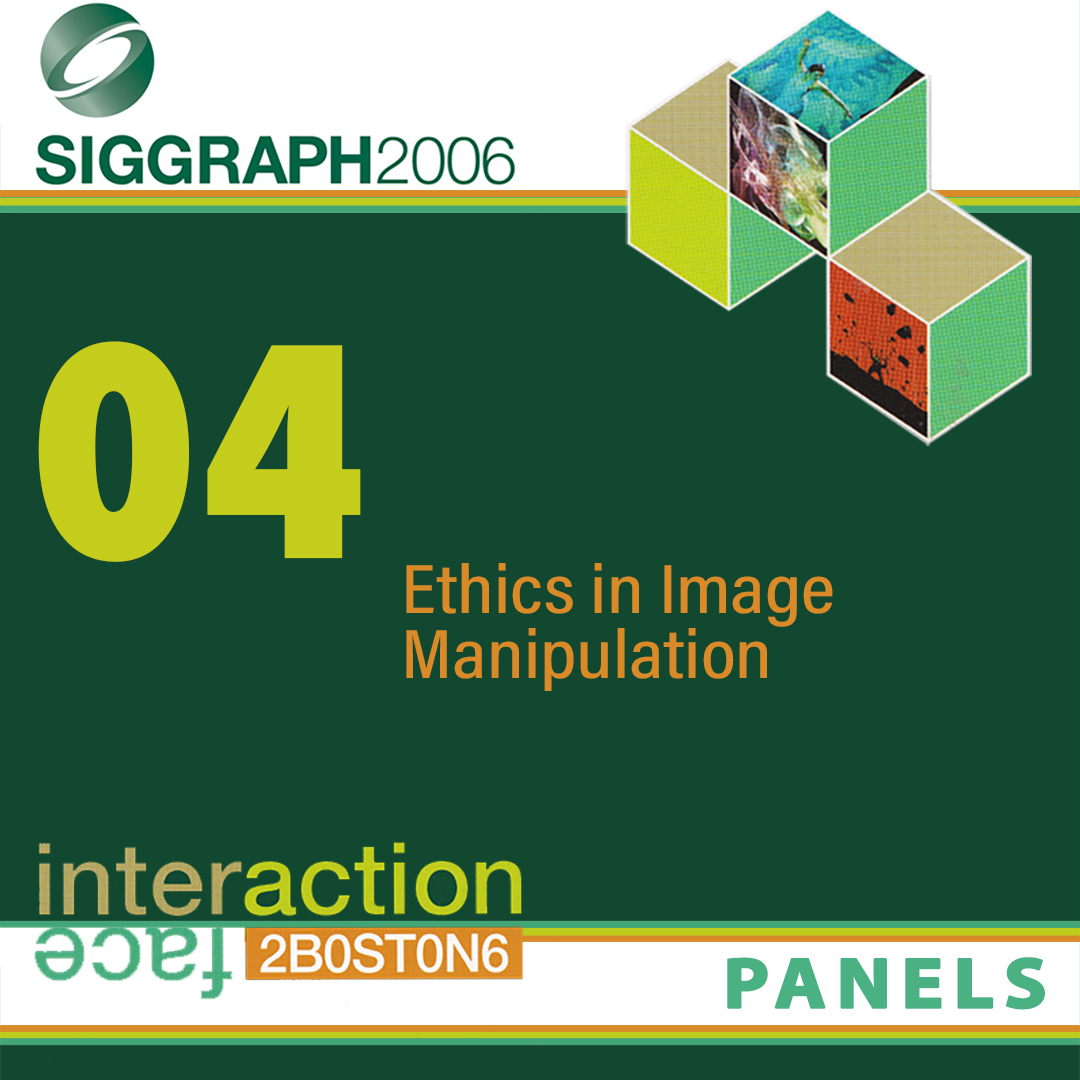“Ethics in Image Manipulation” by Carlson, DeLevie and Oliva
Conference:
Type(s):
Entry Number: 04
Title:
- Ethics in Image Manipulation
Presenter(s)/Author(s):
Abstract:
For a very small investment, anyone can access the tools required to make significant yet undetectable changes to photographs and other images. The SIGGRAPH community can take much of the credit for this amazing progress. Should we also take the responsibility? Should SIGGRAPH get more involved in public policy?
Some recent examples of significant unethical applications:
* During the OJ Simpson investigation, both Time and Newsweek ran Simpson’s mug shot on their covers, in the same week. But Time doctored the photo to make Mr. Simpson look darker, blurrier, and more sinister.
* In 2004, the Bush presidential campaign admitted that it digitally duplicated soldiers to change the appearance of a campaign-event photo.
* During the 2000 New Year’s Eve celebration, CBS digitally replaced the NBC logo on the Times Square Jumbotron with their own logo.
Image manipulation is essential in the visual effects industry, but it is discouraged in research and journalism. And there are many gray areas. When is image manipulation appropriate? How should the SIGGRAPH community respond to unethical applications of what we have created? Where do we draw the line, and should we draw it? How do we teach these ethics to our students




